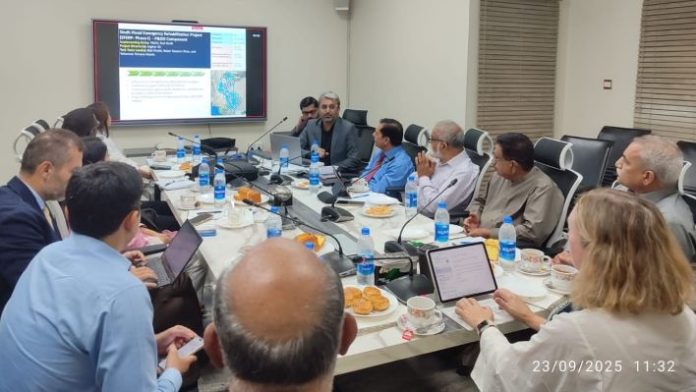By Nazir Siyal
KARACHI: A World Bank mission praised the Government of Sindh for the successful implementation of the Sindh Flood Emergency Rehabilitation Project (SFERP), jointly executed by the Sindh Irrigation Department and the Planning & Development Department. Launched after the devastating 2022 floods, the project has rehabilitated key infrastructure, restored livelihoods, and strengthened Sindh’s disaster response capacity.
The delegation, led by Ms. Catherine Signe Tovey, Practice Manager for Urban, Resilience, and Land, noted that Sindh completed the project ahead of schedule and with high quality standards, adopting a “build back better” approach informed by lessons from the 2010 floods.
Ms. Tovey said: “In light of Pakistan’s climate vulnerabilities, building resilience is not just important, it is urgent.
SFERP reflects collective effort, sustainability, and global best practices in post-disaster recovery.”
Achievements under SFERP include,
97% infrastructure rehabilitation and 100% livelihood restoration across 19 districts including Jamshoro, Dadu, Thatta, Badin, Tharparkar, Larkana, Sukkur, and others.
Completion of 825 km of 141 flood-affected roads.
98% institutional strengthening and 96% project management milestones achieved.
Project Director Ghulam Asghar Kanasro emphasized that the initiative focused on equitable recovery, especially for vulnerable groups such as women, children, and the poor. Senior officials from Rescue 1122 and the Irrigation Department highlighted that all infrastructure was rebuilt to enhance engineering and climate resilience standards.
The World Bank mission commended Sindh’s resilience efforts, underscoring that the province now stands better prepared to withstand future climate-related disasters.

















